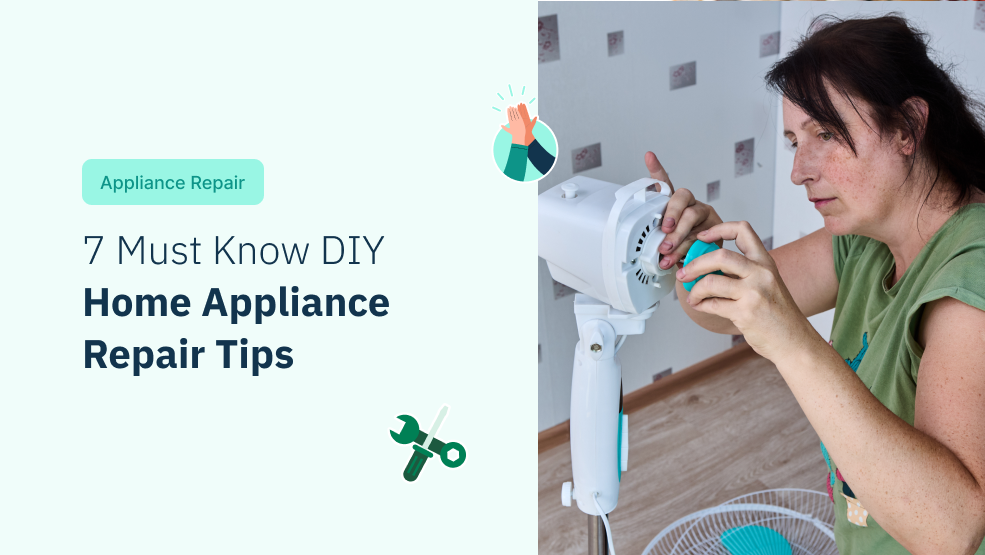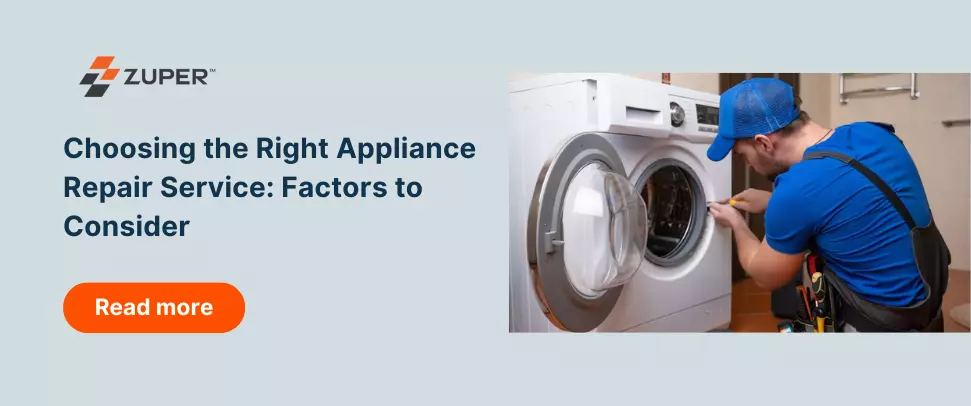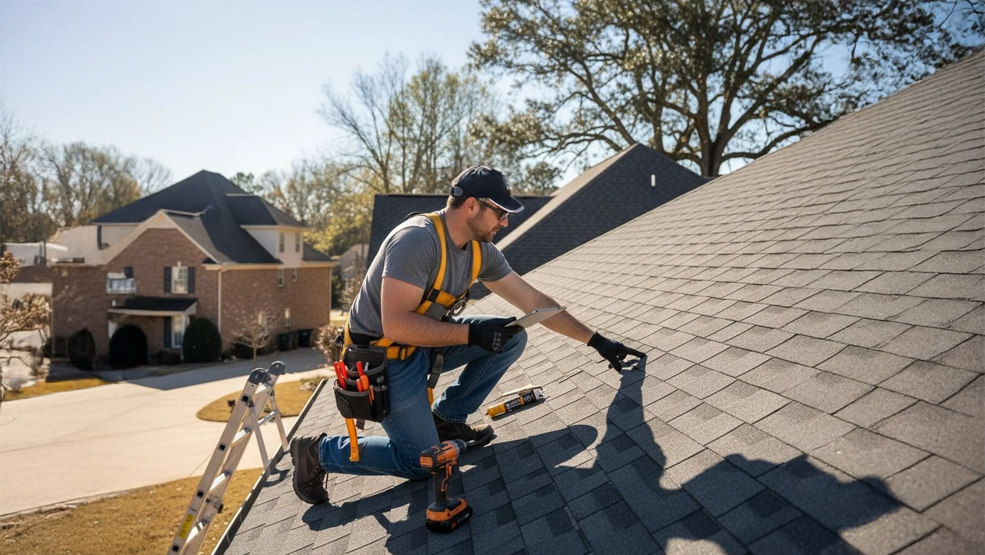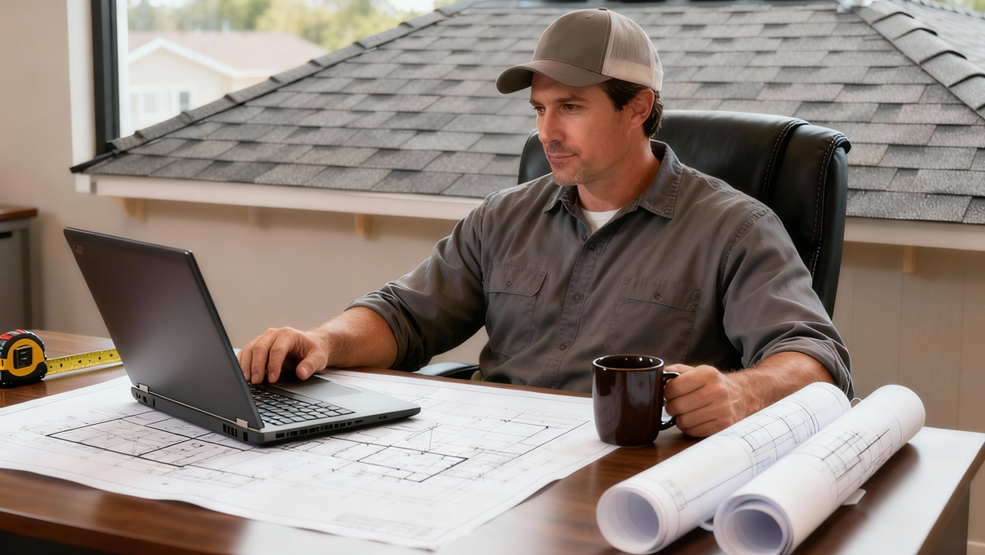So you want to repair a home appliance—good for you! People love to do DIY appliance repair. There is a sense of confidence and accomplishment that comes from fixing an appliance yourself. Why spend money on repair services if the job is simple enough to do it yourself?
We are going to tell you seven killer tips that will save you a lot of time and help you fix your home appliances faster. With these tips, you can avoid the frustration of challenging DIY fixes and endless internet searches.
However, safety should always be your top priority when attempting DIY appliance repairs. While there’s often no harm in trying to fix things yourself, it is important to know your limits. There are times when professional help is necessary, and it’s crucial to recognize those situations. Let’s learn more about home appliance repairs!
Tip #1 Preparation is key to successful repair
The key to a successful repair is preparation, it is easy to get frustrated due to going back and forth between activities. When you are trying to fix things without experience or expertise, you might end up damaging the appliance. So, gather everything you will need—the necessary tools, documentation, safety equipment, and the appliance you are trying to repair. Keeping a mobile device handy for quick Internet searches is not a bad idea either. As far as tools go, the basic toolkit for repair includes screwdrivers, wrenches, pliers, and a mustimeter.
Tip #2 Take pictures before disassembling
How many times have you started a repair by yourself but ended up making it worse? Sometimes, you have lost hope and have resorted to getting a new appliance. Reassembly is the culprit. Everything will seem easy while dismantling, you think you will remember everything. But that is an assumption that will only end in frustration and tears. Dedicate a few minutes to taking pictures and videos of anything you are dismantling for the first time. Label the screws and parts, making note of where they belong. Taking the time to document where things came from will help immensely when it is time to reassemble things.
Tip #3 Check for faults in the heating system
If the appliance for repair makes use of a heating coil, then faulty heating elements will be among the most common problems encountered. Take a toaster or a coffee maker, for example, they have elements like coils and burners. When these appliances are constantly plugged in, they are at risk of sustaining damage after a power outage. When the power returns, the surge on the line can expose appliances to voltages above what they are designed for. Wiring is also another common problem in appliances with heating coils. Prolonged use can lead to worn-out wiring, resulting in bad connections and poor power delivery. Similarly, we cannot miss out on thermostat issues that control when to engage and disengage the heating systems for an appliance. Using this tip, you can easily identify problems with heating appliances.
Tip #4 Inspect motors, blades, belts, and gears for issues
We just covered heating appliances; now, let’s delve into motor appliances. Appliances typically fall into either temperature or motor categories. With motor appliances, a common occurrence is a damaged motor. Motors can wear down with use, especially if they are overloaded or not properly lubricated, leading to a complete loss of function. Additionally, motor appliances contain belts and gears that can become worn or broken over time, causing equipment failure. Another critical element to watch out for is blades, which can also contribute to appliance problems. Using this tip, you can easily identify issues in your appliance early and save time and money on repairs.
Tip # 5 Clean the filters regularly
Filters play a crucial role in the performance of appliances, but they can also be the main culprit when things go wrong. Without needing a consultation, you can easily check and clean filters to maintain efficiency. Over time, filters trap dirt particles, leading to a buildup that can block them. This is particularly common in appliances like dishwashers and refrigerators, where food particles and mineral deposits can clog the filters, potentially damaging the appliance.
Appliances that deal with air or water quality, such as air purifiers or refrigerators with water dispensers, rely on filters to remove impurities. However, a clogged filter can significantly reduce the effectiveness of these appliances. For instance, a clogged air purifier filter won’t clean the air as effectively, while a clogged refrigerator filter might restrict water flow or alter the taste of the water. Regularly checking and cleaning filters is a simple yet effective way to ensure your appliances work smoothly and efficiently.
Tip #6 Know when to replace and repair
When it comes to fixing your home appliances, think about how simple or fancy they are. If you have got a basic, cheap little appliance that’s acting up, it might be smarter to just replace it instead of trying to fix it, especially if it’s making weird noises. But if you’re dealing with a big, expensive appliance like a fridge or washing machine, it is probably worth fixing instead of shelling out for a new one. Just make sure you keep them clean. Deep cleaning regularly makes all the difference! Stick to a simple maintenance schedule to keep them running smoothly after the repair. In the end, think whether the time and effort you’ll spend on repairs are worth the long-term benefits—it is either repair or replacement.
Tip #7 Set smaller expectations and don’t hesitate to call professional services
Starting small helps you set realistic expectations of your repair skills. Complex repairs often require specialized knowledge and tools. By taking a step-by-step approach, you’ll gain a more realistic understanding of your capabilities and know when to seek professional help for bigger issues. Appliance repairs can go sideways if something unexpected arises. When you start small, the stakes are lower. If a mistake is made, it is less likely to cause significant damage to expensive components, protecting both the appliance and your wallet. Remember, seek professional help when needed. Don’t complicate things by DIY; sometimes, professional services are the best choice.
A step-by-step guide to troubleshooting common home appliances
1. How to fix a refrigerator that is not cooling
Step 1: Check the power source. Make sure the fridge is plugged in, and the outlet is working. Try plugging another appliance into the same outlet.
Step 2: Adjust the thermostat. Verify the thermostat is set to a cool enough temperature (around 35-40°F for the refrigerator and 0°F for the freezer).
Step 3: Clean the condenser coils: Dust buildup on the condenser coils can affect cooling. Locate the coils (usually on the back or bottom of the fridge). Unplug the fridge, pull it out, and carefully vacuum the coils with a soft brush attachment.
Step 4: Inspect the door seal: A damaged seal lets cool air escape. Place a dollar bill halfway into the seal and close the door. If you can easily pull the dollar out, the seal needs replacing.
2. How to fix a washing machine that won’t spin
Step 1: Check for unbalanced load. An unbalanced load can cause the washing machine to stop spinning to prevent damage. Redistribute the clothes evenly and restart the spin cycle.
Step 2: Clean the drain pump filter. A clogged filter can prevent the machine from spinning properly. Consult your user manual for the location and cleaning instructions specific to your model.
Step 3: Check the drive belt. A loose or broken belt can cause the spin cycle to fail. You’ll need to access the washing machine’s inner components to inspect and potentially replace the belt. If you’re uncomfortable doing this yourself, consider calling a repair professional.
3. How to clean a clogged dryer vent
Step 1: Disconnect the dryer. Unplug the dryer and pull it away from the wall. Disconnect the metal vent pipe from the back of the dryer.
Step 2: Clean the dryer vent hose. You can use a shop vac or a long brush to remove lint and debris from the hose.
Step 3: Clean the wall vent. Locate the outside vent flap and remove any visible lint or debris. Use a long brush or a vent cleaning kit to clean the entire vent pipe from the dryer to the outside vent.
4. How to replace a washing machine drain hose
Step 1: Gather your tools. You’ll need pliers, a screwdriver, and a replacement drain hose (ensure it’s the correct size for your washing machine model).
Step 2: Access the drain hose: Depending on your washing machine model, you might need to remove the front panel or reach the hose from behind the machine.
Step 3: Disconnect the old hose: Use pliers to loosen the hose clamps on both ends and detach the hose.
Step 3: Install the new hose. Attach the new hose to the washing machine and drainpipe, securing them with clamps. Tighten them securely with pliers, but avoid over tightening.
5. How to fix a oven that is not heating properly (oven temperature calibration)
Step 1: Consult your user manual. Most ovens have a built-in calibration mode. Refer to your user manual for specific instructions on how to access and use this mode.
Step 2: Thermometer test: If your oven doesn’t have a calibration mode, you can try a DIY test. Place an oven thermometer in the center of a rack and heat the oven to 350°F. After 30 minutes, compare the thermometer reading with the oven temperature setting. A small difference (up to 25°F) might be adjustable with the calibration mode, but a larger discrepancy suggests a problem requiring a repair professional.
6. How to fix a leaky dishwasher
Step 1: Identify the source of the leak: Common culprits include the door seal, drain hose, or spray arm. Look for visible water trails or puddles around these components.
Step 2: Check the door seal: Inspect the door seal for tears or cracks. A damaged seal needs replacement.
Step 3: Tighten connections: Loose connections around the drain hose or spray arm can cause leaks. Tighten any clamps or fittings with a screwdriver.
Step 4: Replace worn parts: If the leak persists after checking the seal and connections, the culprit might be a faulty component like the spray arm or a hose.
Replacing these parts might be a complex task, so consider consulting a repair professional.
Adopt technological solutions for efficient appliance repairs
Today’s appliances are more than just machines; they’re intricate systems packed with sensors, microprocessors, and even Wi-Fi capabilities. While handling a clogged drain or a loose belt might be well within your DIY skill set, these intelligent devices can present challenges that require a different approach. That is why you need to look for professional services that use technological solutions to correctly and quickly rectify repairs.
Let’s say your oven is displaying a cryptic error code, and you cannot find a solution in the manual book, or let’s say your smart dishwasher is refusing to connect to Wi-Fi, rendering its remote control features useless. These scenarios showcase the shortcomings of traditional DIY methods.
While replacing a washer hose is a task that can be done by yourself, diagnosing software glitches or communication issues between your appliance and other smart devices demands a different skill set. This is where technological solutions like field service management software (FSM) come in. It serves as the central nervous system for appliance service companies, streamlining everything from scheduling appointments to dispatching technicians who are equipped to handle the complexities of smart appliances.
Eliminate frustration and save time using FSM solution
But how does this benefit you, the homeowner who has hit the limits of your DIY expertise?
When your DIY efforts reach a roadblock, field service management software makes it easy to transition to professional help. You can schedule appointments through the software, providing technicians with crucial details about your appliance’s make, model, and the specific issue you are facing.
Furthermore, the software empowers technicians with a wealth of information before they even arrive at your doorstep. This includes service history, error code interpretations, and necessary equipment needed. With this knowledge, technicians can come prepared with the right tools and parts, increasing the likelihood of resolving the issue in a single visit – saving you time and frustration.
Moreover, the software fosters clear communication between you and the service company. You can track the technician’s progress, access invoices, and even receive post-service reports detailing the work done and the parts replaced. This transparency builds trust and ensures you’re kept in the loop throughout the repair process.
Bring your appliance back to normal quickly
So, repairing home appliances yourself is really a good idea and will save you some cash. But be careful and put safety first. If things seem too tricky, it is smart to call in the professionals, especially for fancy smart appliances—you don’t want to make things worse, right? Follow the seven tips and handle DIY home appliance fixes like a pro. We are sure you using these tips, you will get your appliance back to normal quickly.
Step up and be a force for good. For every T-shirt you wear, over 700 gallons of water is consumed. You hold the power to reclaim gallons of water with every garment you wear. Choose minimalism; Save water. Mindful closet for a sustainable future!




